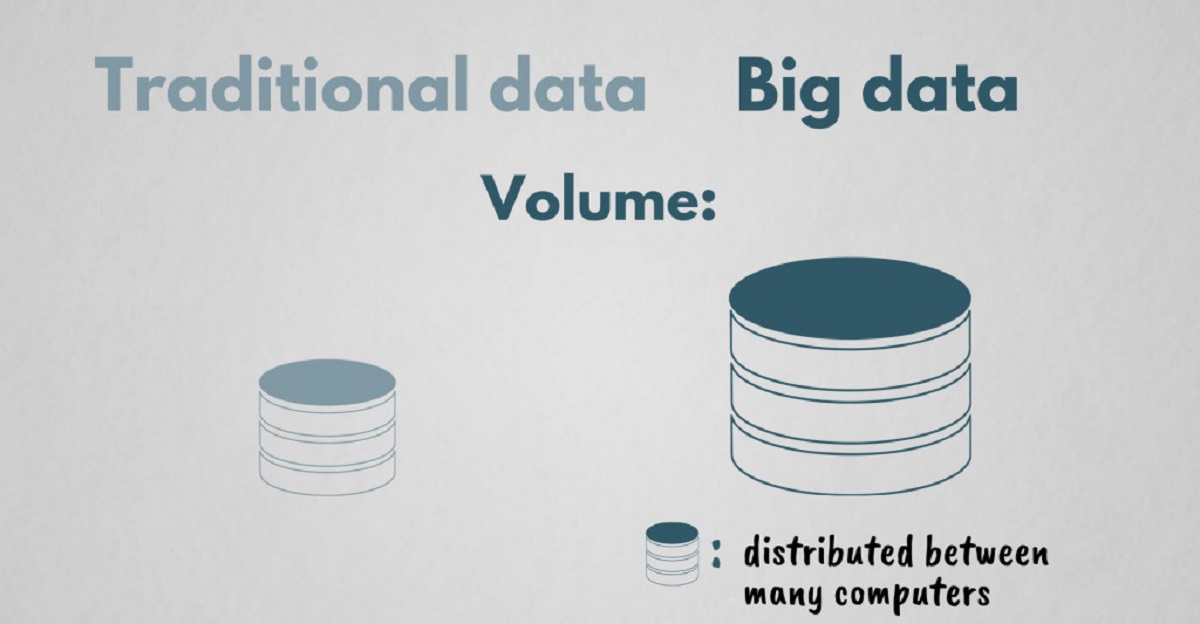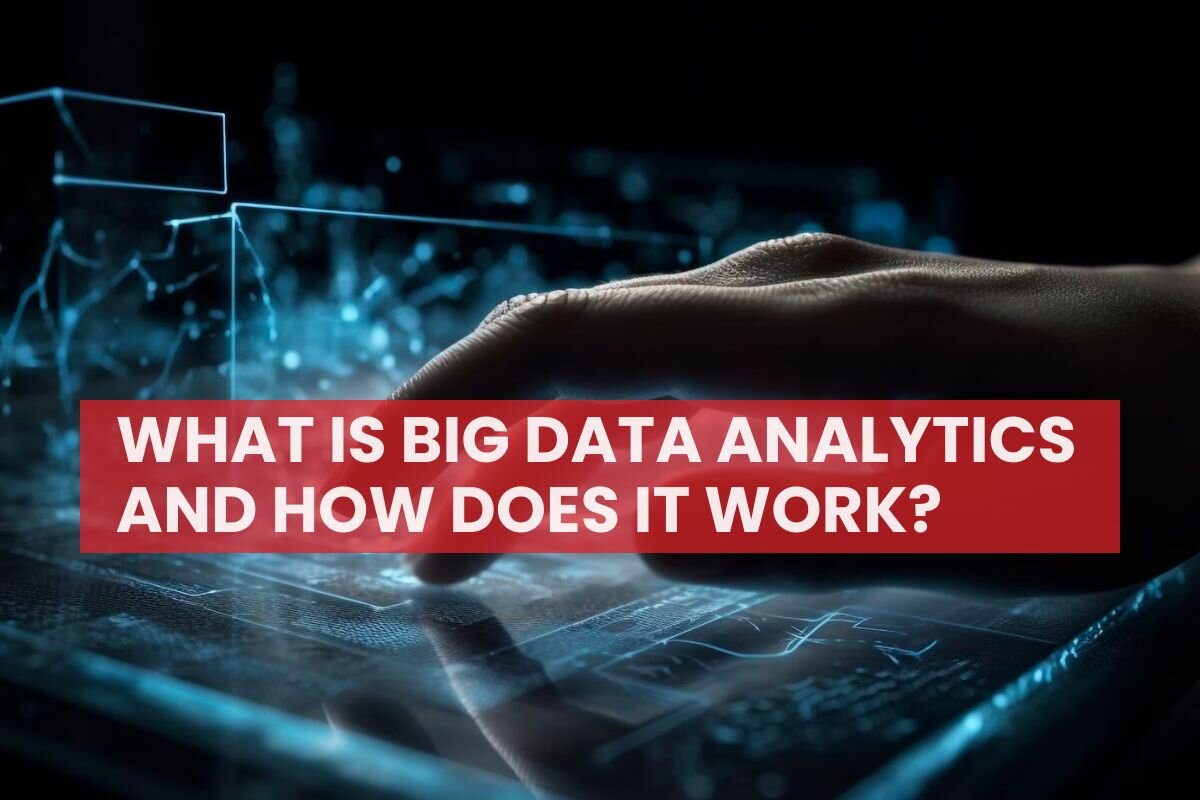Introduction
With the rapid evolution of technology, the amount of data generated and processed on a daily basis has skyrocketed. This has led to the emergence of a new concept in the realm of data management and analysis – Big Data. Big Data refers to a vast collection of structured, semi-structured, and unstructured data that is too large and complex to be effectively processed by traditional data processing applications. The sheer magnitude of Big Data brings along several challenges and opportunities for businesses and organizations across various industries.
Traditional Data, on the other hand, refers to the structured and well-defined data that has been processed and stored in traditional databases or file systems. It typically includes data that is generated from structured sources such as spreadsheets, transactional databases, and enterprise systems. Traditional data management approaches have been designed to handle this type of data efficiently and effectively.
Understanding the key differences between Big Data and Traditional Data is vital for organizations looking to harness the full potential of data-driven insights. In this article, we will explore the main differentiating factors between these two types of data, including volume, velocity, variety, veracity, and value, as well as their implications on processing, analysis, and storage techniques.
Definition of Big Data
Big Data refers to a vast and diverse collection of data that is characterized by its volume, velocity, variety, veracity, and value. These five V’s outline the distinctive features of Big Data and differentiate it from traditional data.
Firstly, the volume of Big Data refers to the immense amount of data that is generated from various sources such as social media platforms, sensors, and digital devices. The volume of Big Data can reach terabytes, petabytes, or even exabytes, making it larger than what traditional data management systems can handle.
The velocity of Big Data refers to the speed at which data is generated and processed. Big Data is generated in real-time or near-real-time, with massive streams of data continuously flowing into organizations at an unprecedented rate. Traditional data management systems struggle to process data in such a dynamic and rapid manner.
The variety of Big Data refers to the different types and formats of data that are available. This data can come in structured, semi-structured, or unstructured forms. Structured data is well-organized and easily searchable, like the data found in traditional databases. Semi-structured data exists in a partially organized format, containing tags or labels that provide some level of organization. Unstructured data, on the other hand, lacks a predefined structure, making it challenging to interpret and analyze.
The veracity of Big Data refers to the uncertainty and variability of data quality. Big Data sources may include data that is incomplete, inconsistent, or inaccurate. Traditional data management processes are not designed to handle this level of uncertainty, requiring specialized techniques and algorithms.
The value of Big Data lies in the insights and strategic advantages that organizations can derive from analyzing and understanding the data. By gaining deeper insights into customer behavior, market trends, and business processes, organizations can make data-driven decisions that lead to improved performance and competitive advantage.
In summary, Big Data is characterized by its immense volume, high velocity, diverse variety, uncertain veracity, and significant value. Understanding these defining characteristics is crucial for organizations seeking to effectively leverage Big Data for driving innovation and achieving business success.
Definition of Traditional Data
Traditional data refers to the structured and well-defined data that has been processed and stored using traditional data management systems. It is typically generated from structured sources such as spreadsheets, transactional databases, and enterprise systems.
Structured data, which is the basis of traditional data, is organized and formatted in a predefined manner, following a specific schema. It is easily searchable and can be stored in relational databases, making it highly suitable for traditional data management approaches.
The main characteristics of traditional data include its organization, consistency, and accuracy. Traditional data is organized into tables and rows, with clearly defined relationships between different data elements. This allows for efficient querying, analysis, and interpretation.
Consistency is another crucial aspect of traditional data. Data integrity is ensured through strict adherence to data quality standards, validation rules, and predefined data structures. This enables organizations to rely on the accuracy and consistency of traditional data for decision-making processes.
Traditional data is usually generated within the boundaries of organizational systems and processes. It includes data related to sales transactions, customer profiles, financial records, and inventory management, among others. This type of data is well-suited for structured query languages (SQL) and traditional data management systems like relational databases.
In contrast to Big Data, traditional data is relatively lower in volume and velocity. It can be easily processed and analyzed using traditional tools and technologies. Traditional data is also typically characterized by its semi-structured or structured nature, as opposed to the unstructured and diverse nature of Big Data.
Overall, traditional data refers to structured and well-organized data that has been collected and processed using traditional data management techniques. While Big Data poses new challenges and opportunities, traditional data continues to play a vital role in organizations’ data acquisition, management, and analysis processes.
Volume
One of the key distinguishing factors between Big Data and Traditional Data is the volume of data generated and processed. Big Data is characterized by its immense volume, often reaching terabytes, petabytes, and even exabytes of data.
Traditional data, on the other hand, typically involves data sets of a smaller scale. It can be measured in gigabytes or terabytes, which are considerably smaller compared to the vast quantities of data associated with Big Data.
The exponential growth in the volume of data can be attributed to several factors. The proliferation of digital devices, the rise of social media platforms, and the increasing adoption of Internet of Things (IoT) devices have contributed to the exponential increase in data generation. This data includes text, images, videos, sensor data, and more.
The technology advancements that enable organizations to store and process such vast volumes of data include distributed computing, cloud storage, and parallel processing. These advancements have made it possible to handle and analyze massive data sets that were previously unimaginable.
Understanding the massive volume of Big Data poses a significant challenge for organizations. Traditional data management systems and tools may struggle to handle the sheer size of Big Data efficiently. Traditional techniques designed for smaller data sets need to be adapted or replaced with more scalable and specialized approaches.
To effectively handle the volume of Big Data, organizations employ techniques such as distributed file systems (e.g., Hadoop), NoSQL databases, and data compression algorithms. These technologies allow for the storage and processing of enormous data sets across multiple servers or clusters, ensuring scalability and performance.
It is important for organizations to adapt their infrastructure and data management practices to accommodate and leverage the substantial volume of Big Data. By doing so, they can unlock valuable insights and gain a competitive edge in this data-driven era.
Velocity
Velocity is another critical aspect that sets Big Data apart from Traditional Data. Velocity refers to the speed at which data is generated, processed, and analyzed. In the era of Big Data, data is generated in real-time or near-real-time, often at an incredible pace.
Traditional data is typically generated and processed at a slower pace compared to Big Data. It is often captured and stored in batch processes, where data is collected over a period and processed periodically. This delay in processing enables organizations to handle the data within their existing infrastructure and resources.
In contrast, the velocity of Big Data is characterized by the continuous and rapid generation of data. Examples of high-velocity data sources include social media feeds, sensor data from IoT devices, financial market data, and website clickstream data. These sources generate massive streams of data that need to be captured and analyzed in real-time to derive timely insights.
Handling high-velocity data requires specialized tools and techniques that can process and analyze data streams in real-time. Technologies like complex event processing (CEP) and stream processing frameworks, such as Apache Kafka and Apache Storm, are employed to ingest, process, and analyze data streams with low latency.
The ability to process data in real-time empowers organizations with the opportunity to make timely decisions and take immediate actions based on the insights derived from the high-velocity data. This enables businesses to respond quickly to changes in customer behavior, market trends, and other critical factors.
Dealing with the velocity of Big Data requires organizations to establish scalable and resilient data processing architectures. This may involve distributed systems and cloud-based solutions that can handle the high data throughput and accommodate the dynamic nature of data streams.
By embracing the velocity of Big Data, organizations can gain a competitive edge by quickly adapting to market dynamics, detecting anomalies in real-time, and improving overall operational efficiency.
Variety
Variety is a significant characteristic that distinguishes Big Data from Traditional Data. Variety refers to the diverse types and formats of data that are available in the Big Data landscape.
Traditional data is typically structured and well-organized, often stored in databases using predefined schemas. This structured data includes numerical data, text-based data, and categorical data, which can be easily stored, queried, and analyzed using standard database management systems.
In contrast, Big Data encompasses a wide range of data types, including structured, semi-structured, and unstructured data. Structured data follows a specific schema and is organized in a tabular format with well-defined columns and rows. This could include data from spreadsheets, transactional databases, or enterprise systems.
Semi-structured data, on the other hand, may have some organization, but it lacks a rigid structure. It contains additional metadata or tags that provide some level of organization or context. Examples of semi-structured data include XML or JSON files, log files, and social media posts.
Unstructured data is the most diverse and challenging data type to handle. It lacks a predefined structure and format, making it difficult to store and analyze using traditional methods. Unstructured data includes text documents, emails, images, videos, social media content, and sensor data.
The diversity in data types and formats poses significant challenges to organizations looking to harness the power of Big Data. Traditional data management systems and analytical tools are not designed to handle the complexity and variability of unstructured and semi-structured data.
To effectively manage and analyze the variety of Big Data, organizations utilize specialized technologies and techniques. This includes natural language processing (NLP) for extracting insights from text data, computer vision algorithms for image and video analysis, and sentiment analysis for social media data.
By embracing the variety of Big Data, organizations can gain deeper insights into customer behavior, market trends, and other critical factors that were previously difficult to capture and understand. However, this also requires organizations to invest in advanced analytics tools and infrastructure to effectively handle and derive value from the diverse range of data types.
Veracity
Veracity refers to the accuracy, trustworthiness, and reliability of the data, which is a critical factor that distinguishes Big Data from Traditional Data. In the context of Big Data, veracity becomes more complex due to the vast sources and diverse nature of data.
Traditional data management systems and processes are designed to handle structured and well-defined data, ensuring a high level of data quality. Data integrity is maintained through data validation checks, data cleaning processes, and adherence to predefined data standards.
However, Big Data sources often encompass unstructured and semi-structured data that differs in quality and reliability. Data obtained from social media platforms, customer reviews, or sensor devices may be incomplete, inconsistent, or subject to human error or bias.
Ensuring the veracity of Big Data requires specialized techniques and mechanisms to manage data uncertainty. This includes data cleansing and preprocessing steps to address missing values, outliers, and inconsistent data points. Additionally, organizations deploy data quality frameworks to validate and ensure the accuracy and reliability of the collected data.
Advanced analytics techniques like data profiling, data lineage, and anomaly detection are employed to identify and mitigate data quality issues in Big Data. These techniques help organizations assess the trustworthiness and reliability of the data before performing analyses or making data-driven decisions.
Another challenge arising from the veracity of Big Data is the need for context and understanding. Unstructured data, such as social media posts or customer reviews, often require natural language processing (NLP) algorithms to extract meaningful insights and sentiment analysis techniques to interpret sentiment and opinion.
Veracity also extends beyond the data itself to include the sources and credibility of the data. Organizations must consider the reputation, authority, and authenticity of data sources to ensure the reliability and trustworthiness of the data they are working with. This can involve verifying data sources, determining data ownership, and establishing data governance policies.
By addressing the veracity of Big Data, organizations can enhance the accuracy and reliability of their analyses and decision-making processes. However, it requires implementing robust data quality management practices, leveraging advanced analytics techniques, and establishing mechanisms to validate and ensure the trustworthiness of the data.
Value
Value is a fundamental aspect that sets Big Data apart from Traditional Data. While Traditional Data has value, the value derived from Big Data can be exponentially greater due to its ability to provide deeper insights and strategic advantages.
Big Data offers organizations the opportunity to extract valuable insights from vast and diverse data sources. By analyzing Big Data, businesses can uncover patterns, correlations, and trends that were previously unseen. This enables organizations to make data-driven decisions and gain a competitive edge.
The value of Big Data lies in its potential to generate actionable insights and drive innovation. By understanding customer behavior, preferences, and needs through comprehensive data analysis, organizations can develop personalized marketing strategies, improve customer experience, and optimize product development.
Moreover, Big Data allows businesses to identify and respond to emerging trends and market shifts in real-time. By leveraging data analytics, organizations can make informed decisions faster, respond to customer demands promptly, and adapt their strategies accordingly.
The value of Big Data also extends to areas such as fraud detection, risk management, and predictive maintenance. With the ability to analyze large volumes of data in real-time, organizations can detect anomalies, identify potential risks, and predict equipment failure, helping to optimize operations and minimize losses.
Furthermore, the value of Big Data can be leveraged in research and development activities. Data-driven insights can aid scientists, researchers, and innovators in discovering new patterns, breakthroughs, and solutions across various fields, such as healthcare, energy, and transportation.
However, it is important to note that the value of Big Data is not inherent within the data itself. Extracting value requires the right tools, technologies, and expertise to collect, process, analyze, and turn the data into actionable insights. Organizations need to invest in scalable data storage, advanced analytics software, and skilled data professionals to unlock the true value of Big Data.
By harnessing the value of Big Data, organizations can gain a competitive advantage, improve decision-making processes, innovate, and drive growth in today’s data-driven world.
Processing and Analysis
The processing and analysis of Big Data pose significant challenges due to its volume, velocity, variety, veracity, and value. Traditional data processing and analysis methods often fall short in effectively handling Big Data, as they are not designed to accommodate the scale and complexity of data involved.
When it comes to processing Big Data, traditional data processing techniques may not be able to handle the sheer volume and velocity of the data. To overcome these challenges, organizations turn to distributed computing frameworks like Apache Hadoop and Apache Spark. These frameworks enable the distributed processing of large datasets across clusters of computers, thereby providing the scalability and performance required for Big Data processing.
Parallel processing is another key approach employed in the processing of Big Data. By breaking down the data into smaller chunks and processing them simultaneously on multiple processing units, organizations can significantly reduce processing time. High-performance computing (HPC) platforms and data parallelism techniques are used to achieve this parallel processing.
In addition to processing, the analysis of Big Data requires specialized tools and techniques. Traditional data analysis methods may not be suitable for the diverse and unstructured nature of Big Data. Advanced analytics techniques such as machine learning, natural language processing (NLP), data mining, and predictive analytics play a crucial role in uncovering insights and patterns within Big Data.
Machine learning algorithms, for example, can learn from vast amounts of data to identify patterns, make predictions, and automate decision-making processes. Natural language processing enables the extraction of valuable insights from unstructured text data, such as social media posts or customer reviews.
Data visualization and data storytelling techniques are also critical in making sense of Big Data. With the help of interactive dashboards, charts, and graphs, organizations can present complex data in a more understandable and visually appealing manner. This aids in communicating insights, facilitating data-driven decision-making, and driving actionable outcomes.
Furthermore, real-time data processing and analysis are essential in many industries. Organizations need to extract insights and make decisions based on up-to-date information. Stream processing frameworks like Apache Kafka and Apache Flink enable the processing and analysis of data streams in real-time, allowing organizations to respond promptly to changing circumstances and make timely decisions.
In summary, processing and analyzing Big Data require specialized tools, technologies, and techniques tailored to handle its unique characteristics. From distributed computing and parallel processing to advanced analytics and real-time data processing, organizations need to leverage these technologies to maximize the value and insights derived from Big Data.
Storage
The storage of Big Data presents unique challenges due to its voluminous and diverse nature. Traditional storage solutions may not be sufficient to handle the scale, variety, and velocity of Big Data, leading organizations to adopt specialized storage systems and technologies.
One of the primary challenges of storing Big Data is its enormous volume. Traditional databases and file systems may struggle to accommodate the sheer size of Big Data, requiring organizations to adopt more scalable and distributed storage solutions.
Distributed file systems, such as Apache Hadoop’s Hadoop Distributed File System (HDFS), are widely used for storing Big Data. These file systems divide data into smaller blocks and distribute them across multiple servers or nodes in a cluster. This provides scalability, fault tolerance, and high data availability, making it suitable for storing and processing large datasets.
NoSQL databases have also gained popularity for storing and managing Big Data. Unlike traditional relational databases, NoSQL databases are designed to handle unstructured and semi-structured data. They provide flexibility and horizontal scalability, allowing organizations to store and retrieve vast amounts of diverse data with high performance.
Cloud storage solutions have emerged as a popular option for Big Data storage. Cloud providers offer scalable and cost-effective storage services that can handle the large volumes of data associated with Big Data. Additionally, cloud storage offers the advantage of easy accessibility, data redundancy, and the ability to scale storage resources as needed.
Data compression techniques are employed to optimize storage efficiency and reduce storage costs. Compression algorithms help reduce the size of data without significant loss of information, allowing organizations to store and analyze more data within limited storage resources.
Another consideration in Big Data storage is data replication and backup. Organizations replicate data across different storage devices or geographic locations to ensure data availability and mitigate the risk of data loss. Backing up Big Data is essential to protect against hardware failures, disasters, or human errors.
Moreover, data lifecycle management is crucial in Big Data storage. Not all data has the same value or requires the same level of accessibility. By implementing data tiering strategies, organizations can store frequently accessed data in high-performance storage systems and move less frequently accessed or archival data to cost-effective storage tiers.
In summary, storing Big Data necessitates the adoption of scalable, distributed, and flexible storage solutions. Distributed file systems, NoSQL databases, cloud storage, data compression, data replication, and data lifecycle management strategies are key components in addressing the storage challenges associated with Big Data.
Conclusion
Big Data is reshaping the way organizations collect, manage, and analyze data. Its distinctive characteristics – volume, velocity, variety, veracity, and value – set it apart from traditional data and present both challenges and opportunities.
The volume of Big Data, measured in terabytes to exabytes, requires organizations to utilize distributed computing and parallel processing techniques for efficient data handling. The velocity of Big Data necessitates real-time or near-real-time processing and analysis to enable timely decision-making.
The variety of Big Data, including structured, semi-structured, and unstructured data, demands specialized tools and algorithms to extract valuable insights. The veracity of Big Data introduces uncertainty, requiring data quality management techniques and validation processes.
Ultimately, the value of Big Data lies in the ability to derive actionable insights and drive innovation. By leveraging advanced analytics techniques, organizations can gain a competitive edge, improve customer experiences, optimize operations, and make data-driven decisions.
Storage solutions play a critical role in Big Data management, with distributed file systems, NoSQL databases, cloud storage, compression techniques, data replication, and data lifecycle management strategies being employed to store and effectively manage the vast amounts of data.
In conclusion, understanding the differences between Big Data and Traditional Data is crucial for organizations to unlock the full potential of data-driven insights. By harnessing the power of Big Data, organizations can gain a competitive advantage, improve decision-making processes, foster innovation, and drive growth in this data-centric era.

























